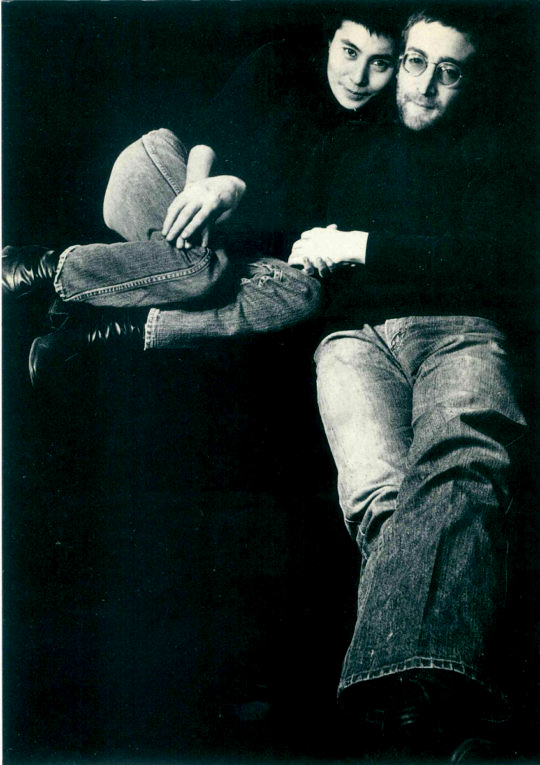
Penny Tweedie, John Lennon and Yoko Ono, 1970. Postcard from the Heroines Collection.
Penny Tweedie (1940 – 2011)
English photojournalist
Legendary photographer Penny Tweedie worked for the top publications of her era, from Queen Magazine, The Daily Telegraph, National Geographic Australia, and Newsweek to Paris Match magazine.
She began her career in 1961, taking powerful black and white photographs of post-war housing conditions in Glasgow for the homeless organisation Shelter.
She was famously fired in 1971 by The Sunday Times for refusing to photograph the execution of four prisoners during victory celebrations at the end of the Bangladesh War of Independence.
She went on to cover the invasion of East Timor in 1975. Penny also worked on assignments for many major charities such as Save the Children, Hospice and Oxfam, documenting war, famine, and the environment in over sixty countries.
Her portraits were also powerful and insightful; she photographed prominent figures such as Twiggy, Diana Princess of Wales, John Lennon, Germaine Greer, and Bernadette Devlin.
Perhaps her greatest achievement was the vibrant documentation of the lives of Aboriginal Australians with whom she lived during the last period of her career. After taking photographs in Alice Springs, a town in Australia’s Northern Territory, for the BBC’s Explorers: The Story of Burke and Wills, Penny contributed a story on their enduring culture and customs to National Geographic magazine (November 1980).
She also produced three books – This My Country (1985), Spirit of Arnhem Land (1998) and Indigenous Australia: Standing Strong (2001). Her work was recognised in 1999 with the Walkley Award for photojournalism.
Sadly, Penny took her own life at the age of 70 near her family home in Hawkhurst, Kent in 2011.
Her photographic archive of 160,000 works is held by the National Library of Australia. The National Portrait Gallery of Australia holds 47 of her portraits. Timor Archives also holds her Timor photographs from September 1975. Panos Pictures and Corbis Collection also hold many of her images, on license.
By Paula Vellet











